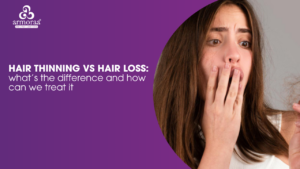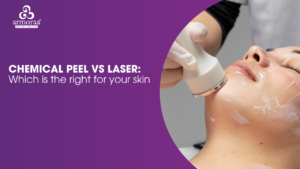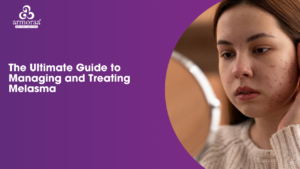Hair thinning and hair loss are two common hair-related concerns that affect millions of people worldwide. While both conditions can lead to hair loss, they have distinct differences in terms of causes, symptoms, and treatment options. In this blog, we’ll explore the differences between hair fall and hair thinning and provide insights on how to manage and prevent these conditions.

WHAT IS HAIR THINNING?
Hair thinning, also known as hair miniaturization, is a condition where there is a reduction in the diameter of the hair follicle or shaft. Hair thinning can be caused by a combination of genetic, hormonal, and environmental factors. This condition is associated with hair fall.
CAUSES OF HAIR THINNING
Several factors contribute to hair thinning. The potential causes of hair thinning are given below.
- Genetics: Androgenetic alopecia, also known as male/female pattern baldness, is a common cause of hair thinning.
- Age: As we age, the likelihood of hair thinning increases. It affects both males and females, but the incidence is higher in females. As the hair follicle becomes thinner and fragile, there is a decline in hair density. This eventually results in baldness.
- Diet: With the rise of dietary trends such as intermittent fasting, one meal a day (OMAD), veganism, and calorie-restricted diets for weight loss, inadequate nutrient intake has become more common. A deficiency in protein, iron, vitamin B12, and other essential vitamins and minerals can contribute to hair thinning.
- Hormonal conditions: Hair thinning can be due to hormonal changes. This hair loss is termed androgenic alopecia and female pattern hair loss. Increased androgen levels can cause hair thinning. Androgen is a male sex hormone produced predominantly in males and minimally in females. Other conditions like thyroid disorder, pregnancy, and menopause can result in hair thinning.
- Chemical treatments: Beauty treatments like hair straightening, keratin, hair botox, permanent curls, and perming can affect the hair. Harmful hair products like hair colours, sprays, and gels can also affect hair quality, causing hair thinning.
- Chronic stress: Stress raises the level of a hormone called cortisol. High stress can push hair follicles into a resting phase (called the telogen phase), which stops new hair from growing and leads to noticeable hair loss.
WHAT IS HAIR LOSS?
Hair loss, also known as alopecia, is a condition where hair falls out from the scalp, leading to partial or complete baldness. Hair loss can be caused by a range of factors, including genetics, hormonal imbalances, medical conditions, and medications.
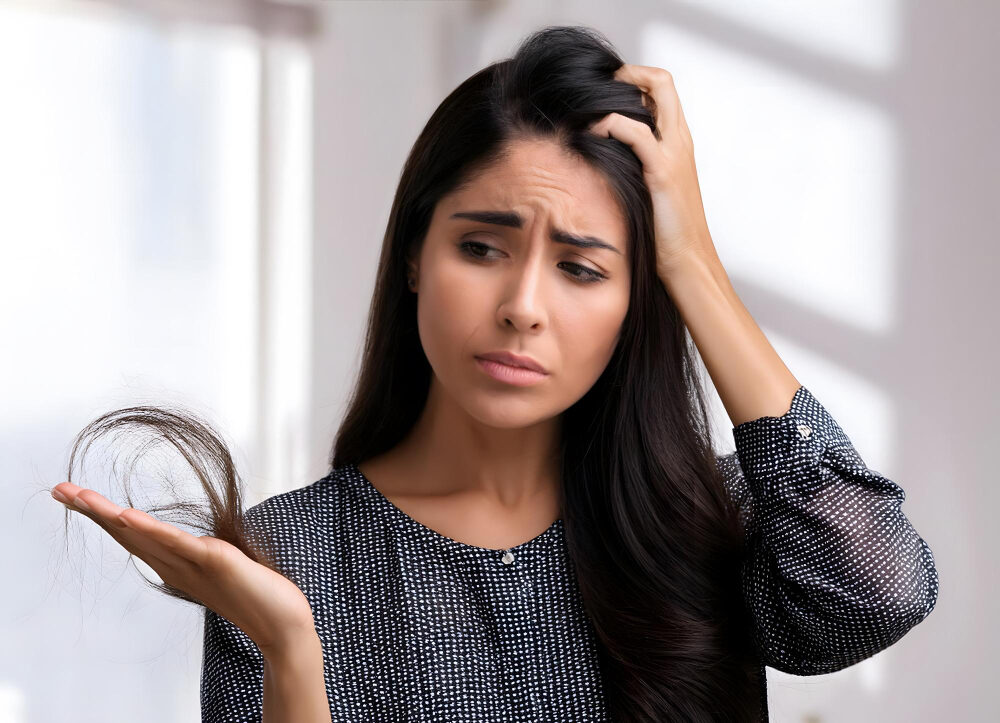
WHAT CAUSES HAIR LOSS?
- Hereditary conditions: It is the most common cause of hair loss in both males and females. It is called male pattern hair loss in men and female pattern hair loss in women. In females (FPHL), there is hair thinning, whereas in Males ( MPHL), there is receding hairlines or bald patches.
- Stress: Stress in acute or chronic cases can result in hair loss, causing the hair follicles to run down for months. The stress usually interrupts and affects the hair growth cycle. As a result, shedding occurs where hair regrowth can be difficult. This kind of hair loss will end once the stress is addressed and treated.
- Medical illness: Certain medical conditions, such as thyroid disorders, autoimmune diseases, and skin conditions, can lead to hair loss.
- Cancer treatment: Chemotherapy and radiation therapy cause hair loss. A person with cancer treatment might have rapid hair loss, but hair usually begins to regrow within months after the completion of radiotherapy and chemotherapy.
- Age: Hair growth decreases as age increases. At one point, the shafts (hair follicles) stop hair growth. Hair also tends to become fragile and thin
- Scalp infection: Certain infections, like tinea capitis and folliculitis, can cause hair loss.
WHAT IS THE DIFFERENCE BETWEEN HAIR THINNING AND HAIR LOSS
- Extent of hair loss: Hair thinning is a gradual process where hair becomes thinner and shorter, while hair loss is a more extensive condition where hair falls out from the scalp.
- Causes: While both conditions can be caused by genetics and hormonal imbalances, hair loss is more likely to be caused by medical conditions, medications, and trauma.
- Symptoms: Hair thinning is characterized by a reduction in hair density, while hair loss is marked by noticeable bald patches or complete baldness.
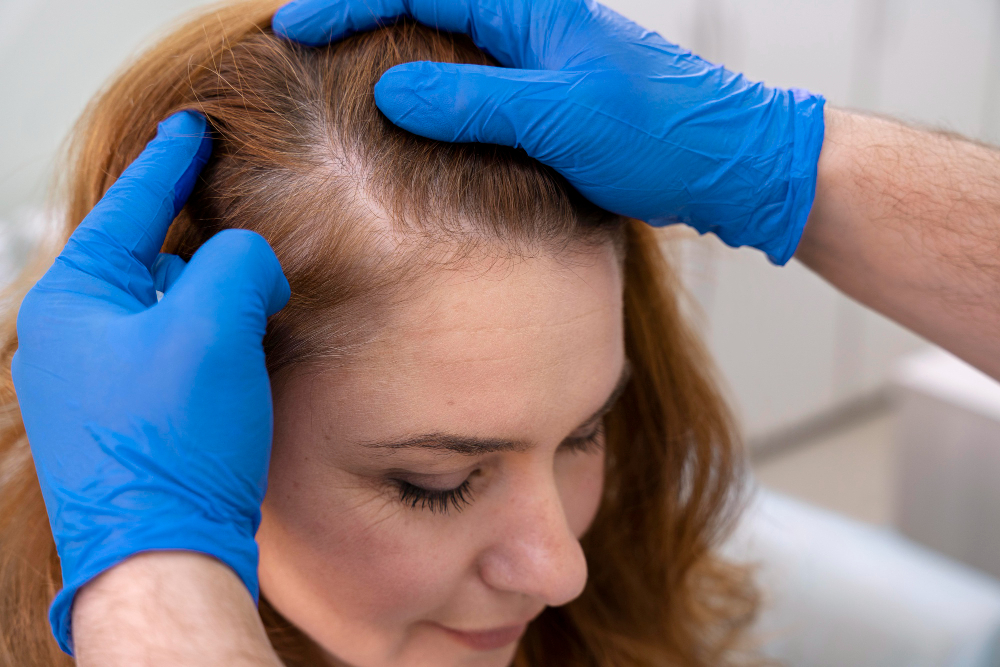
MANAGEMENT OF HAIR THINNING AND HAIR LOSS
Investigations include nutritional values, hormonal study, and baseline blood work to rule out the underlying causes. Treatment includes medical management with topical and oral medication like minoxidil, finasteride and treating the nutritional deficiencies. Procedures like PRP, PRF, QR676, Exosomes, and intralesional dutasteride are tailored to each patient
CONCLUSION
In conclusion, hair loss and hair thinning are two distinct conditions that require different approaches of management. By understanding the causes and symptoms of each condition, you can take steps to prevent and manage hair loss and promote healthy hair growth. Consult an expert dermatologist for personalized advice on managing hair fall and hair thinning.


